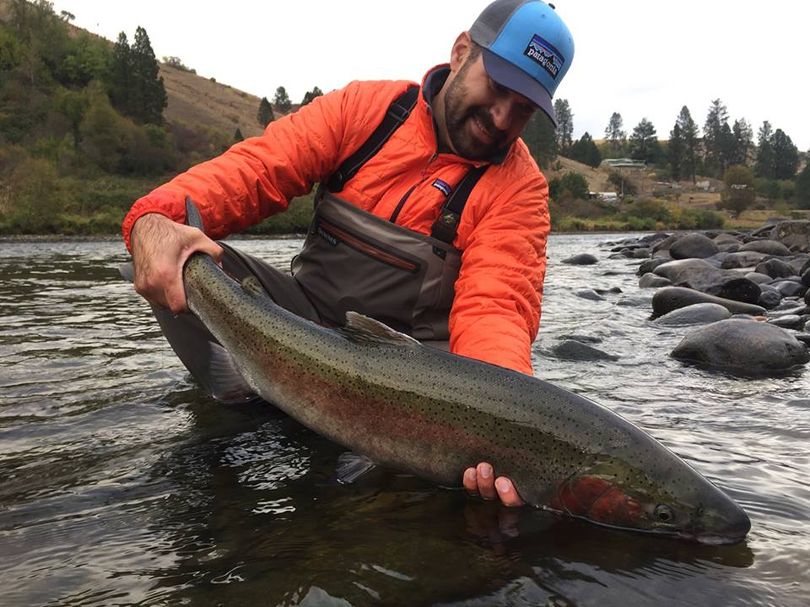B-Run steelhead upgrade buoys anglers short on good news

FISHING -- Steelhead fishermen got their first good news of in a fish-poor season last week when a group of state, federal and tribal fisheries managers that coordinates salmon and steelhead fishing in the Columbia River basin upgraded its forecast for B-run steelhead.
Here's a detailed report by Eric Barker of the Lewiston Tribune:
The Technical Advisory Committee, known as TAC, now estimates 40,500 of the big-bodied steelhead that return mostly to the Clearwater River will make it at least as far as Bonneville Dam. If those fish experience average survival, about 28,350 will make it to Lower Granite Dam on the Snake River.
The preseason forecast called for just 25,800 B-run fish to make it to Bonneville and 18,000 to Lower Granite.
"We are getting a pretty good return of Dworshak (National Fish Hatchery) fish coming back," said Alan Byrne, an Idaho Department of Fish and Game fisheries biologist at Boise.
"I think this will be one of the bigger returns to the Clearwater in the last couple of years," he said. "I can't remember the last time TAC increased the group B steelhead."
Over the past several years, the B-run has been far less reliable than the A-run. But with the A-run flagging this fall, the opposite is true.
The B-run fish are bigger and they generally, but not always, spend two years or more in the ocean. The A-run fish are smaller and usually spend just one year in the ocean, but also includes some that spend multiple years at sea. Biologists said the A-run is nearly devoid of one-ocean fish this year, meaning those that spend one year in the Pacific. Instead, it is made up almost entirely of two-ocean fish. Since the older fish make up only a small portion of the run, the overall return is down significantly.
Salmon managers have also downgraded the forecast for fall chinook that return upstream of Bonneville Dam. They said an estimated 432,300 of the fish known as upriver brights will return this fall, down from a preseason forecast of 628,000. The return of coho salmon to the Columbia River is also disappointing.
Byrne called the B-run upgrade "the one bright spot of the fall season." But it's not all sunshine. The wild component of the B-run, which is listed as threatened under the Endangered Species Act, isn't doing well at all. Byrne said of the more than 40,000 B-run fish expected to pass Bonneville Dam this fall, only 5,700 of them will be wild.
"The hatchery returns are pretty good because of Dworshak, but we are not going to have a very good wild return; in fact, the wild run is less than we had forecasted.
The preseason forecast called for about 7,400 wild B-run fish to make it to Bonneville. There is another bit of bad news for the B-run. Although this year's run is up, next year could be a different story. Byrne said of all the fish bound for Dworshak Hatchery, only about 100 of them are early returners that have spent two years at sea. Biologists track the number of B-run fish that return after spending just one year in the ocean and use it to predict the following year's return of two-ocean fish. The low return of the early returners could indicate next year's return of two-ocean B-run fish could go the same direction as this year's one-ocean A-runners.
